Quarterly Newsletter of the Native Bee Society of British Columbia
- Native Bee Society of BC
- Jun 12, 2021
- 12 min read
Updated: Jun 13, 2021
June 2021
Volume 2 | Issue 2

-----
Editors-in-chief: C. Thuring & M. Marriott
Contributors: Lori Wiedenhammer, Tyler Kelly, Josh Thompson, Amanda
Fly Straight to Article:
NBSBC Bee Tracker Project
Join the Party on iNaturalist
by Lori Wiedenhammer and Tyler Kelly
Do you love bees and want to get to know them better? Are you interested in collaborative learning? Do you have access to a camera and computer (whether smart phone or laptop) and internet? Ever wanted to join a bee party? Now is your chance, with the NBSBC Bee Tracker project on iNaturalist! Get involved!

The NBSBC Bee Tracker project is dedicated to celebrating native bee sightings in BC and sharing our excitement and knowledge around these amazing little animals. The project has two main goals: i) to learn more about the location and phenology of bees and their forage plants in BC, and ii) to hear about your experiences looking for bees, finding bees and
observing bees.
The Native Bee Society of BC believes that the core of all conservation efforts is powered by understanding, appreciation and, dare we say, love for the natural world. And that is what we hope to inspire with this project. Because of this, the format of the project is quite broad: the only restraints are that your observations must be within the province of British Columbia and they must be of a bee. We’re curious to see the phenology of emerging native bee species and the flowers they are foraging on. Let’s party!
How it works: Sign into the app, search for “NBSBC Bee Tracker” and join the project. Now all photos you add of bees in B.C. will be added to the project and we will help you identify them! Be sure to get as close as you can and take photos from multiple angles, but don’t get stung! The photos don’t have to be perfect, but detailed enough that we can see the entire bee. We’ve been seeing bees from all over the province, with some very cool observations. For example, Liam Ragan shared images of bumble bees in the beak of a Lewis’s woodpecker! Liam is Provincial Coordinator for Important Bird Areas in British Columbia. Follow @liamragan on Instagram to see more of his photos.

We have two particular requests from the community which require you to use the “TAGS” function of iNaturalist to mark photos that are 1) your first bee of the season or bee species of the season, #BCFirstBee OR 2) surveyed during a #FlowerHour. Let us explain more...
1) There is a special moment each spring, as the cold and cloudy weather begins to subside when we spot our first spring bee. For many of us, this is the first sign of spring and a reminder of the explosion of colourful flowers and insects that is to come in the following weeks. It’s a joyous moment. We want to share in that experience of finding your first bee of the year - your BCFirstBee! However, because different types of bees emerge throughout the warm months, we also want to hear about the first of each kind of bee you see throughout the year (i.e. your first bumble bee, first mining bee or first leafcutter bee and so on and so on). To contribute, please photograph the bee (you'll need to have joined the project) and use the TAG feature to tag your first bees of the year with #BCFirstBee. In the notes, you can then specify if this was the first bumble bee, mining bee, leafcutter bee, etc.
2) We want to encourage folks to take the time, go outside, and look for bees in an activity that we call Flower Hour! The concept is simple: on a day when you’re able, take one full hour to go outside and look for bees visiting flowers. Similar to the above, try to photograph your observation, add the project, and tag the post #FlowerHour when you spend one hour looking for bees. In the notes, we’d love to hear more about your observations during your hour-long adventure!
Are you in? Do you want to join the bee party? Below are some how-to videos to help get you started.
How to Make a Journal Post
How to Add Tags to New Observations
How to Add Tags to Existing Observations
We can’t wait to see your bee adventures! Please write “bee blurb” in your iNat journal to share your experiences and stories in your search for finding our beautiful bees, even if it’s not a BCFirstBee or FlowerHour. Finally, to encourage more folks to participate we would love your permission to share these observations on our social media channels.
Bios
Lori Weidenhammer is an NBSBC board member and a Vancouver performance-based interdisciplinary artist and educator. She is the author of Victory Gardens for Bees: A DIY Guide to Saving the Bees. Lori works with students of all ages teaching about eating locally and gardening for pollinators. Find out more on her blog.
Tyler Kelly is an NBSBC board member and is also the lab manager for the WoRCS lab at UBC, led by Dr. Claire Kremen, where he works with a collective of experts in agricultural sustainability and biodiversity. He has a MSc from SFU studying plant-pollinator networks in Garry oak habitats, and has worked in wildlife biology for almost a decade.
Videos: Tyler Kelly
A Note to Our Members
To all members of the Native Bee Society of BC: we are so grateful for your support! We want to let you know we are currently experiencing technical issues with the platform we use for online membership subscription. Our apologies if you have experienced any frustration with the system. Rest assured your personal information is safe; we simply need to switch to a process that is less complicated around processing payments. While we sort this out we are extending all current memberships to September, 2021, at which time we will host a special members-only event. We will also offer a special bonus for those who have paid their dues.
Many thanks to you all for your patience!
Native Bees Needs
Summer Gardening Tips for Native Pollinators
by Joshua Thompson
There are lots of things we can do throughout the year to ensure the health and biodiversity of native bees (and other pollinators). In this issue, we offer a few impactful things you can do to attract and benefit native bees throughout the summer months in BC specifically, and the northern hemisphere generally.
Summer is a fabulous season to connect with bees, as they’re so visible, notably through their efforts at foraging. In that sense, it’s important to note that the riches of summer are the consequence of the other seasons, especially spring but also autumn. Those seasons, in any case, are the best times for bee-loving interventions. By summer-time, native bees are actively living out their lives, with total focus on provisioning for their broods to ensure future generations. Below are three specific ways we can make life easier for bees in summer.
Water is life. Like all forms of life, bees need access to water. Particularly in hot periods of the summer, a small water source can be very valuable for bees. Make sure your watering hole is healthy and safe by preventing the danger of drowning. A quick and easy design is a shallow dish of water with a couple of rocks, landing areas, and access points for climbing out of the water if needed. Keep the water fresh by refilling as needed.
Caring for cavity nesters. For anyone who keeps mason bees (Osmia lignaria), it’s important to store those bee hotels in a cool place for the summer and winter months to ensure higher survival rates. The reason for this is that mason bees are subject to a diversity of parasites (e.g., certain species of wasps). These parasites emerge in the summer focused on completing their life cycles, which involves laying their eggs in a mason bee nest to ensure their young will have mason bee larvae to snack on when they hatch. To keep your colony healthy and prevent needless bee casualties, store your mason bee home somewhere safe over the summer months. That being said, if you are happy to host other cavity nesters, like Megachile, Heriades, and Hoplitis, these bees will also be looking for nesting opportunities in the summer.
Healthy and safe forage. Feed the bees by ensuring summer blooming flowers wherever you can! Native plants are the best, as they provide resources to a greater diversity of bees than non-native alternatives, but nativars and some cultivated forms offer value, as well. Make sure to avoid plants treated with neonicotinoids and ensure a pesticide-free landscape to keep pollinators safe.
Below are some summer blooming native species that are great for a variety of bees and pollinators. While this list evokes coastal BC, many of these species overlap to other parts of the province and/ or similar alternatives/ species can be found for your area.

Download a printable version of this chart:
Bio
Joshua Thompson established PlanBee Native Plants in order to make native plants more accessible and to support our local pollinators and wildlife. He is a new board member of the Native Bee Society.
Photos
Photo 1: Tyler Kelly, Bombus fervidus on Beach Peas (Lathyrus japonicus)
Photo 2: Joshua Thompson, thirsty Bombus impatiens on Nootka Rose
Photo 3: Jens Ulrich, Bombus fernaldae on Physocarpus capitatus
Photo 4: Martina Clausen, Bombus nevadensis on Lupine
Photo 5: Tyler Kelly, male Osmia on Erodium cicutarium
Photo 6: Jens Ulrich, Andrena sp. on Physocarpus capitatus
A Mason Bee Story
by Amanda
If you opened my fridge door on January 1, 2021, you would find a small black and red Chocolate Arts box with a pencil tip sized hole cut out and a label on the top reading “BEE PETS." Not that they are pets – let’s say cohabitators lending each other a hand. Inside the box are nestled 32 small brown ovals looking a bit like tiny dates.
They had been carefully removed from their nesting tubes the previous September amidst a surprising amount of debris. The cocoons were first floated in a clear bowl of tepid water then gently scrubbed one by one under running water. Next came a five minute 5% bleach bath then out to dry on a paper towel. They were now ready to be housed in the winter-like refrigerator until Spring.
March 20, 2021: Spring cleaning – time for a bit of a spruce up in the high traffic area that is the lower fridge shelf. But a quick clean turned into a lengthy clean upon discovery of a messy “something” dripping all down the back. Kitchen temperature – 19 degrees. Finally, it’s sparkling and all back in order. Just closing the door when my eye spots a fly on the floor – or is it? No – it's different somehow. Surprise and panic: a MASON BEE – fully hatched! Warning, cocoon keepers: Keep your bees cool. The warmth of the room had signalled the bees to begin biting through their protective shells and now several were out. The chewing and scratching sounds are louder than you would think.
Back in the cool, they soon reverted to stupor. In consultation with my NBSBC friend, it was decided to transfer them to their outdoor home. The next day, seven fully emerged bees and 25 cocoons were tenderly placed on the launching platform of their old home. It was cold out. They stayed immobile till the following day brought a warming sun. The seven fully woke up and began their work of collecting pollen and nectar. Others soon followed and although it was still cold a quick reconnoitre assured me plenty of open flowers could be found within the 300 foot radius they would be foraging in. In all, 23 of the 32 cocoons hatched.
April 14, 2021: The first hole in the corn plastic bee housing is filled. By April 17, three holes are filled. By April 22, eleven are filled.
Bees are seen mostly in the middle of the day – flying in and out, peeking from their cavity to see if it's safe, coming out to do a quick 180 then reenter backwards, slipping and sometimes falling in completing that last wall of the tube, resourcefully scooping up mud dropped on the ledge of their home. One day a few small red eyed insects were spotted hovering near the entrance holes and were soon identified as Houdini flies, a species related to fruit flies. They are trying to lay their own eggs in the mason bees’ pollen caches. Fortunately they are slow moving and it was possible to remove some.
By May 12, twenty holes are filled and by May 17, the 24th hole has been filled in by these masterful masons!
Bio
Amanda is the successful steward of a thriving Mason Bee house, which she won at NBSBC's inaugural AGM. Huge thanks to Amanda for sharing her story and photos.
NBSBC Quarter in Review
Following are some of the engagements the Native Bee Society got up to in the last 4 months.
April 1, 2021. Gardening for Bees. Board member Lori Weidenhammer led a webinar for Burnaby Seniors.
April 17, 2021. Wild bees need messy gardens to survive.
Board member Martina Clausen was interviewed for this article in the Goldstream Gazette. Her take-away: “It’s also important to leave nesting resources, and that means a messy garden.”
April 27, 2021. Vancouver pilot project aims to create native grass and wildflower meadows in 18 city parks.
Two board members of the NBSBC are involved in this pilot project, in which about 37 hectares of land are ear-marked for landscape management that involves less grass cutting and more flowering plants.
May 12, 2021. Bee Engaged: Fireside Chat on World Bee Day
Board member Christine Thuring delivered a webinar for The Doighouse Learning Centre to celebrate World Bee Day, exploring how our gardens and surrounding landscapes can help support native bees.
Announcement of Five-Year Grant: Pollination Pathway in the Columbia Basin
We are pleased to announce the Pollination Pathway, a program funded by the Columbia Basin Trust. According to Board member, Valerie Huff, in her role of Restoration Botanist with the Kootenay Native Plant Society, “the five-year project will enhance plant-pollinator networks within the diverse native plant communities in the Lower Columbia sub-region, and increase the abundance and connectivity of native wildflowers through seed collection, growing and plantings. It will also enhance habitat for native insect pollinators through the preservation of nest sites and the provision of host plants for specialist bees, butterflies and moths. This project will enhance over 250 hectares of riparian camas meadow ecosystems and over 400 hectares of upland showy milkweed meadow ecosystems at seven sites.”
The Buzz
Listening / Audio Recommendations
Listen to radio interviews given by the Native Bee Society in the last 4 months.
Magnificent bees and their springtime movements | The Early Edition with Stephen Quinn | Live Radio | CBC Listen
Native Bee Society of BC founding vice president Marika Van Reeuwyk spoke with CBC host Stephen Quinn on March 18, 2021 about watching bees as we approach spring.
Margaret Gallagher visits an innovative urban garden designed by a real Queen Bee (NBSBC board member Lori Wiedenhammer) on World Bee Day, May 20, 2021.
Bios
Marika Van Reeuywk is NBSBC's vice president and the Manager of Programs & Stewardship at the Environmental Youth Alliance. She has a BSc in Applied Biology, Plant & Soil Sciences from UBC and has led a variety of projects relating to native bees and plants in the fields of education, research, restoration and citizen science over the past decade.
Lori Weidenhammer is an NBSBC board member and a Vancouver performance-based interdisciplinary artist and educator. She is the author of Victory Gardens for Bees: A DIY Guide to Saving the Bees. Lori works with students of all ages teaching about eating locally and gardening for pollinators. Find out more on her blog.
Spring Art Contest Winner
We are thrilled to announce the winner of our Spring Art Contest. We had such wonderful, varied, and creative submissions! It is so great to see how our members find inspiration in native bees. The randomly selected winner of the bumble bee nest box is Karelia! Thanks to all who contributed for sharing your creations with us.
Artwork credits
Image 1 (top left): "Stella" by Deanna Flig, 10"x20" acrylic on canvas. "[Stella] is a bumble bee (no idea on identification) having a great time on a chive. All of my artwork is inspired from my own photographs."
Image 2 (middle): "Native Bumblebee Mobile" by Karelia, mixed media: recycled paper, watercolours twist ties, branches, and beans. A mobile featuring 12 of our native bumblebee species.
Image 3 (top right): "Albert the Bee" by Natasha Beauregard, photograph. "I saved Albert from the pool and fed him sugar water. He warmed up on my hand and then he chilled on a leaf before he flew away."
Image 4 (bottom left): Colletes hyalinus or "Little Clara" by Roxy Reed, mixed media: watercolour paint and ink pen. "Little Clara is from the Colletidae family which are often called plasterer bees or polyester bees [...] sometimes called the hyaline cellophane bee [...] I truly hope you are fortunate enough to catch a glimpse of her and many other amazing native pollinators this year in your fields and gardens."
Image 5 (bottom right): "3D printed bee habitats" by Jen Woodin.
Summer Photography Contest
Do you love taking photos of native bees?
Then join us in celebrating the bee-utiful diversity of native bees in a photography contest! All ages and skill levels are encouraged to participate.
Submitted photos will be showcased on our website and social media AND potentially win a bumble bee house to attract queen bees to your yard or garden!
All participants will be entered into a draw to win a hand-made bumble bee nest box, ready for next season. One lucky winner will be chosen at RANDOM. Winner must be able to pick up the prize in the lower mainland.
We will be collecting submissions from now until July 15, 2021 at midnight PST. Photos must focus on native bees from BC, preferably from your region and taken this season. To be eligible to win the bumble bee nest box, please submit your photos on Instagram with the hashtag #BCNativeBeePhotoContest. If you do not have an Instagram account or you do not have a public Instagram account, upload your submission via this google doc form.
Please also include all the required information along with your submission:
First and last name
Email
Permissions
Title and description
Photo
Looking forward to seeing and sharing all your beautiful photographs!
Find us on:
Facebook: www.facebook.com/BCNativeBees/
Instagram: bcnativebees
Twitter: @BCNativeBees
Interested in getting involved with the society?
Contact us at: bcnativebees@gmail.com


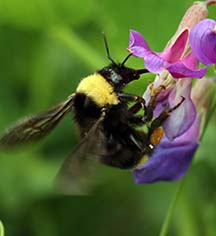
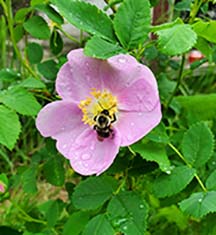


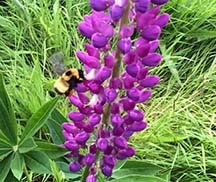
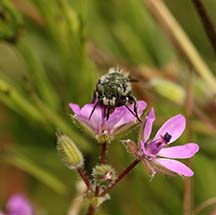







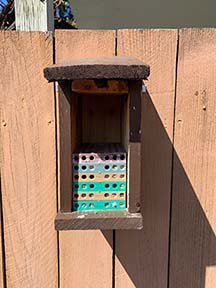
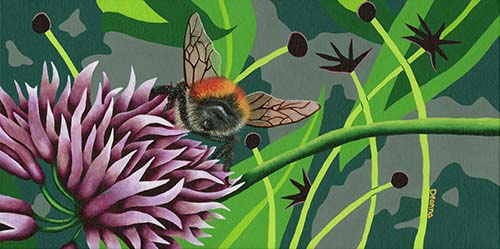







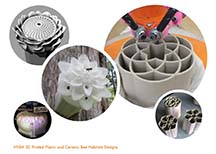
Comments